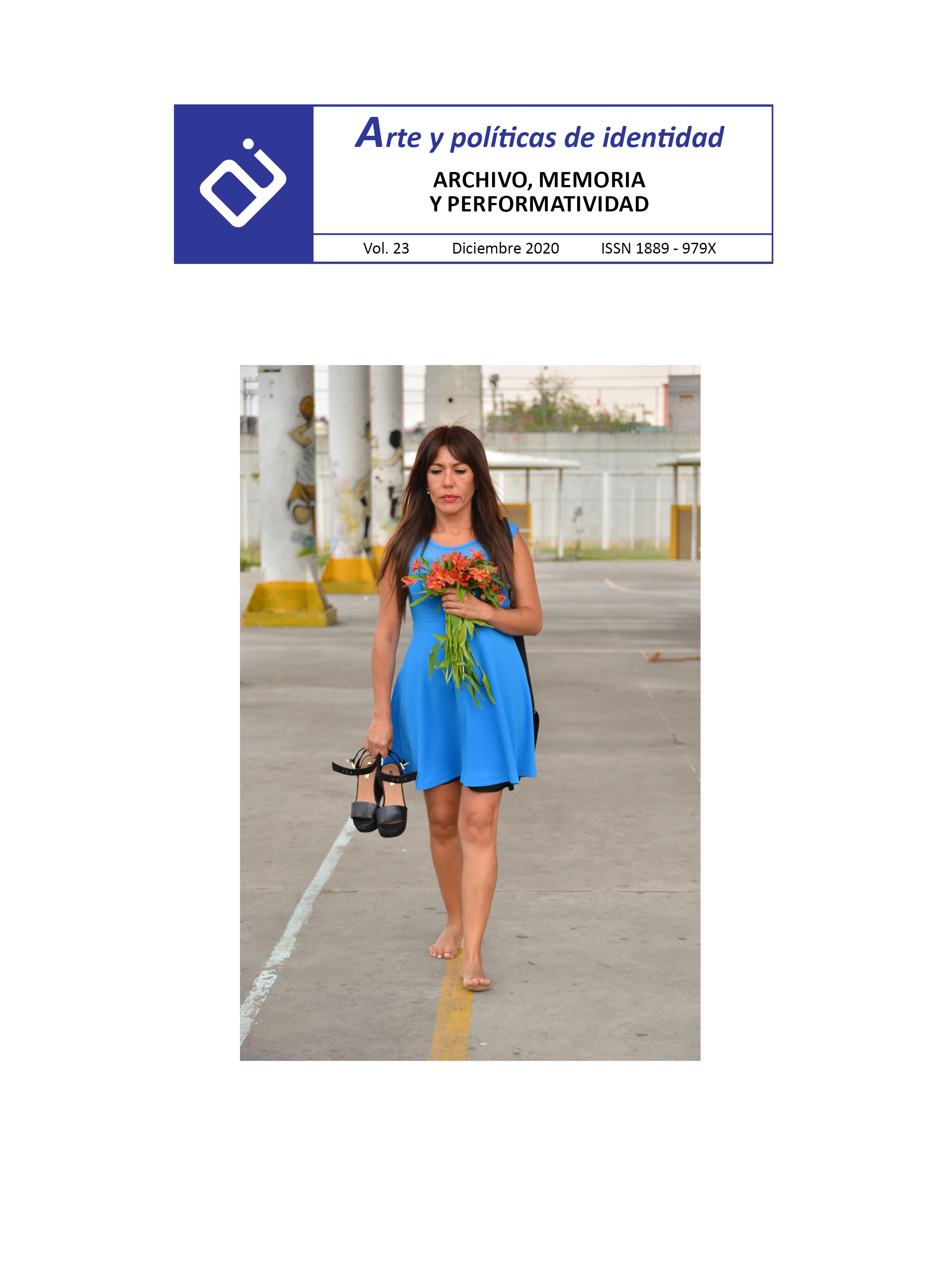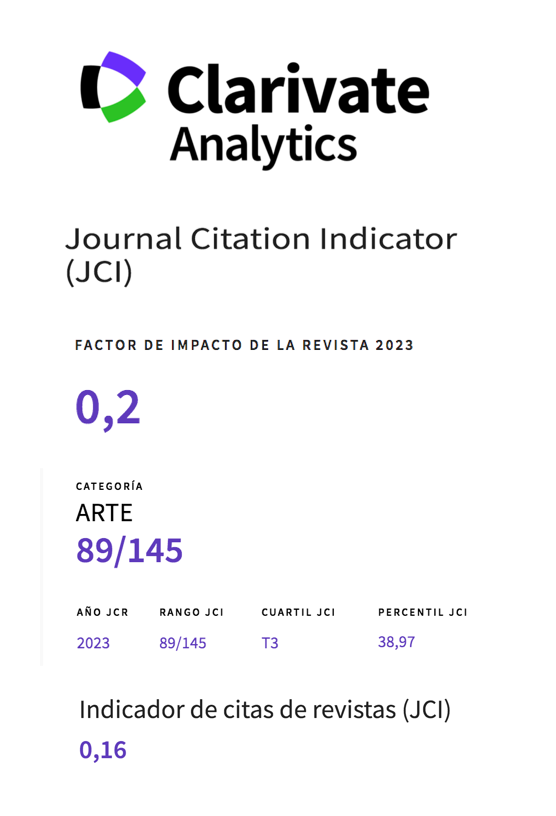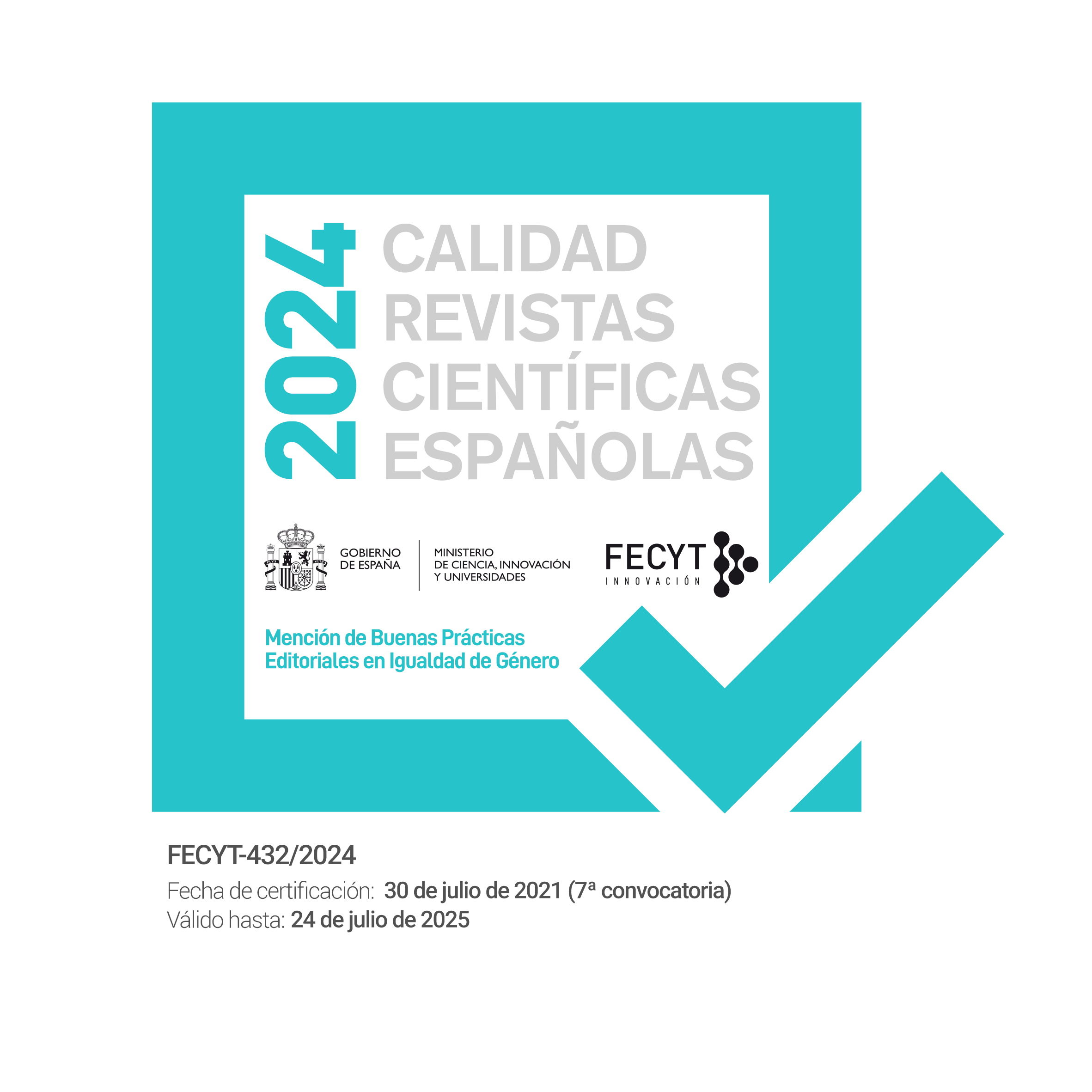Gender and memory: The family album as an autobiographical mark
Abstract
On this paper we would like to show how memory, in any of its varieties, forms an essential part of current artistic discourse and practice. For this, we will focus on the importance of autobiographical narration and its manifestation from the works of artists who work around the family album. We will analyze how this type of photographic archive has been used and reconfigured by artists who have wanted to express their own experiences from a gender perspective. Personal memory interacts with narratives that concern collective memory, where the hegemonic stories that have come down to us have tried to silence these stories. However, art has given voice to themes such as the body and female sexuality, experiences derived from diseases such as cancer or trauma suffered by relatives of dictatorships in certain contemporary societies and which have led to the application of concepts such as postmemory.
Downloads
-
Abstract3256
-
PDF (Español (España))3579
References
Bauman, Z. (2005). Amor Líquido. Acerca de la fragilidad de los vínculos humanos. Madrid: Fondo de Cultura Económica.
Béguin, A. (1952). Preface to Oeuvres by Gerald Nerval. Paris: Gallimard.
Benjamin, W. (2003). La obra de arte en su época de la reproductibilidad técnica. México D.F.: Ítaca.
Borja-Villel, M., 2013. Texto presentación. En: Formas Biográficas. Construcción y mitología individual (pp. 7-11) Madrid: Museo Nacional Centro de Arte Reina Sofía.
Bourdieu, P. (2003). Un arte medio. Ensayo sobre los usos sociales de la fotografía. Barcelona: Gustavo Gili.
Chambers, D. (2001). Representing the Family. Londres: Sage Publications.
Chevrier, J. F. (2013). Formas Biográficas. Construcción y mitología individual. Madrid: Museo Nacional Centro de Arte Reina Sofía. Siruela.
Conway, M. A. et al. (2002). Brain imaging autobiographical memory, The Psychology of Learning and Motivation, 41, 229-263.
Enguita Mayo, N. (2013). Narrativas domésticas: más allá del álbum familiar. En P. Vicente (Ed.), Álbum de familia. [re] presentación, [re]creación e [in]materialidad de las fotografías familiares (pp. 115-136). Madrid: Diputación de Huesca. La Oficina.
Fontcuberta, J. (2013). Monumentalizar el álbum: dos casos de estudio. En P. Vicente (Ed.), Álbum de familia. [re]presentación, [re]creación e [in]materialidad de las fotografías familiares (pp. 151-162). Madrid: Diputación de Huesca. La Oficina.
Fortuny, N. (2014). Memorias fotográficas. Imagen y dictadura en la fotografía argentina contemporánea. Buenos Aires: La Luminosa.
Friedan, B. (1963). The Feminine Mystique. Nueva York: Dell.
Gibbons, J. (2007). Contemporary art and Memory. Images of Recollection and Remembrance. Londres: I.B. Tauris.
Goc, N. (2014). Snapshot Photography, Women’s Domestic Work, and the “Kodak Moment”, 1910s-1960s. En E. Patton y M. Choi (Eds.) Home sweat home: perspectives on housework and modern relationships (pp 27-48). Plymouth: Rowman & Littlefield.
González, M. P. y Pagès, J. (2014). Historia, memoria y enseñanza de la historia: conceptos, debates y perspectivas europeas y latinoamericanas. Historia y Memoria, 9, 275-311. Recuperado de http://www.scielo.org.co/scielo.php?script=sci_arttext&pid=S2027-51372014000200010&lng=en&tlng=es
Hirsch, M. (1997). Family Frames. Photography narrative and postmemory. Londres: Harvard University Press.
Holland, P. (2015). Sweet it is to Scan…: Personal Photographs and Popular Photograph. Nueva York: Routledge. Taylor & Francis Group.
Hume, D. (2001). Tratado de la naturaleza humana. Albacete: Servicios de publicaciones. Diputación de Albacete.
Huyssen, A. (2002). En busca del futuro perdido. Cultura y memoria en tiempos de Globalización. Buenos Aires: Fondo de Cultura Económica.
King, N. (2000). Memory, Narrative, Identity: Remembering the Self. Edimburgo: Edimburgh University Press.
Kotik, C. (1994): The Locus of Memory: An introduction to the work of Louise Bourgeois. En J. Ekman (Ed.), Louise Bourgeois: The Locus of Memory, Works 1982-1993. Nueva York: The Brooklyn Museum.
Kuhn, A. (2013). Otra mirada a Family Secrets. En P. Vicente (Ed.), Álbum de familia. [re]presentación, [re]creación e [in]materialidad de las fotografías familiares (pp. 101-114). Madrid: Diputación de Huesca. La Oficina.
Langford, M. (2013). Contar el álbum: una aplicación del marco oral-fotográfico. En P. Vicente (Ed.), Álbum de familia. [re]presentación, [re]creación e [in]materialidad de las fotografías familiares (pp. 63- 81). Madrid: Diputación de Huesca. La Oficina.
Martín Prada, J. (2010). La condición digital digital de la imagen. En LÚMEN-EX. Premios de Arte Digital. Universidad de Extremadura (pp. 41-53). Cáceres: Universidad de Extremadura.
Millán, M. (2016). Entrevista a Enzo Traverso. Cuadernos deMarte, [S.l.], n. 11, 265-278, dic. 2016. Recuperado de https://publicaciones.sociales.uba.ar/index.php/cuadernosdemarte/article/view/2128
Mitchell, W. J. T. (2009). Teoría de la imagen. Madrid, España: Akal / Estudios visuales.
Ortiz, C. (2005): Fotos de familia: los álbumes y las narrativas domésticas como forma de arte popular. En A. Cea Gutiérrez, C. Ortiz García y C. Sánchez Carretero (Eds.), Maneras de mirar: lecturas antropológicas de la fotografía (pp. 189-210). Madrid: CSIC.
Pollock, G. (2013): “Modernidad y espacios de la feminidad”. En Visión y diferencia. Feminismo, feminidad e historias del arte (pp. 111-163). Madrid: Fiordo.
Puerta Leisse, G. (2013). La construcción de la infancia en el álbum familiar. En P. Vicente (Ed.), Álbum de familia. [re] presentación, [re]creación e [in]materialidad de las fotografías familiares (pp. 83-88). Madrid: Diputación de Huesca. La Oficina.
Rimbaud, J. A. (2006). http://www.biblioteca.org.ar/ [Online] Recuperado de http://www.biblioteca.org.ar/libros/133650.pdf
Rosón, M. (2016). Género, memoria y cultura visual en el primer franquismo (materiales cotidianos, más allá del arte). Madrid: Cátedra.
Saltzman, L. (2006). Making memory matter. Strategies of Remembrance in Contemporary Art. Chicago: The University of Chicago Press.
Sarlo, B. (2005). Tiempo pasado. Cultura de la memoria y giro subjetivo. Una discusión. Madrid: Siglo XXI.
Silva, A. (2013). Álbum: deseos de familia. En P. Vicente (Ed.), Álbum de familia. [re]presentación, [re]creación e [in] materialidad de las fotografías familiares (pp. 21-31). Madrid: Diputación de Huesca. La Oficina.
Sontag, S. (1996). Sobre la fotografía. Barcelona: Edhasa.
Troncoso, L. y Piper, I. (2015). Género y memoria: articulaciones críticas y feministas. En Athenea Digital: Revista de Pensamiento e Investigacion Social, 15(1), 65-90. Recuperado de https://www.researchgate.net/publication/276889487
Vicente, P. (2013). Apuntes a un álbum de familia. En P. Vicente (Ed.), Álbum de familia. [re]presentación, [re]creación e [in] materialidad de las fotografías familiares (pp. 11-19). Madrid: Diputación de Huesca. La Oficina.
Warnock, M. (1987). Memory. Londres: Faber & Faber.
White, H. (1992). Metahistoria. La imaginación histórica en la Europa del siglo XIX. México: Fondo de Cultura Económica.
Works published in this journal are subject to the following terms:
- The Service of Publications from the University of Murcia (publishing house) keeps the published works’ copyrights, and favors and allows the reuse of these works under the license indicated in point 2.
- Works are published in the journal’s online edition under the license Creative Commons Reconocimiento-NoComercial-SinObraDerivada 3.0 España(texto legal). They can be copied, used, disseminated, transmitted and publicly exhibited, as long as: i) the author and original source of publication are cited (journal, publishing house and work’s URL); ii) they are not used for commercial purposes; iii) the existence and specifications of this license are mentioned.
3. Conditions for auto-file. It is allowed and encouraged that authors share electronically their pre-print version (the pre-reviewed version) and /or post-print version (the reviewed and accepted version) of their Works before the publication, since it promotes its circulation and dissemination. RoMEO color: green.










